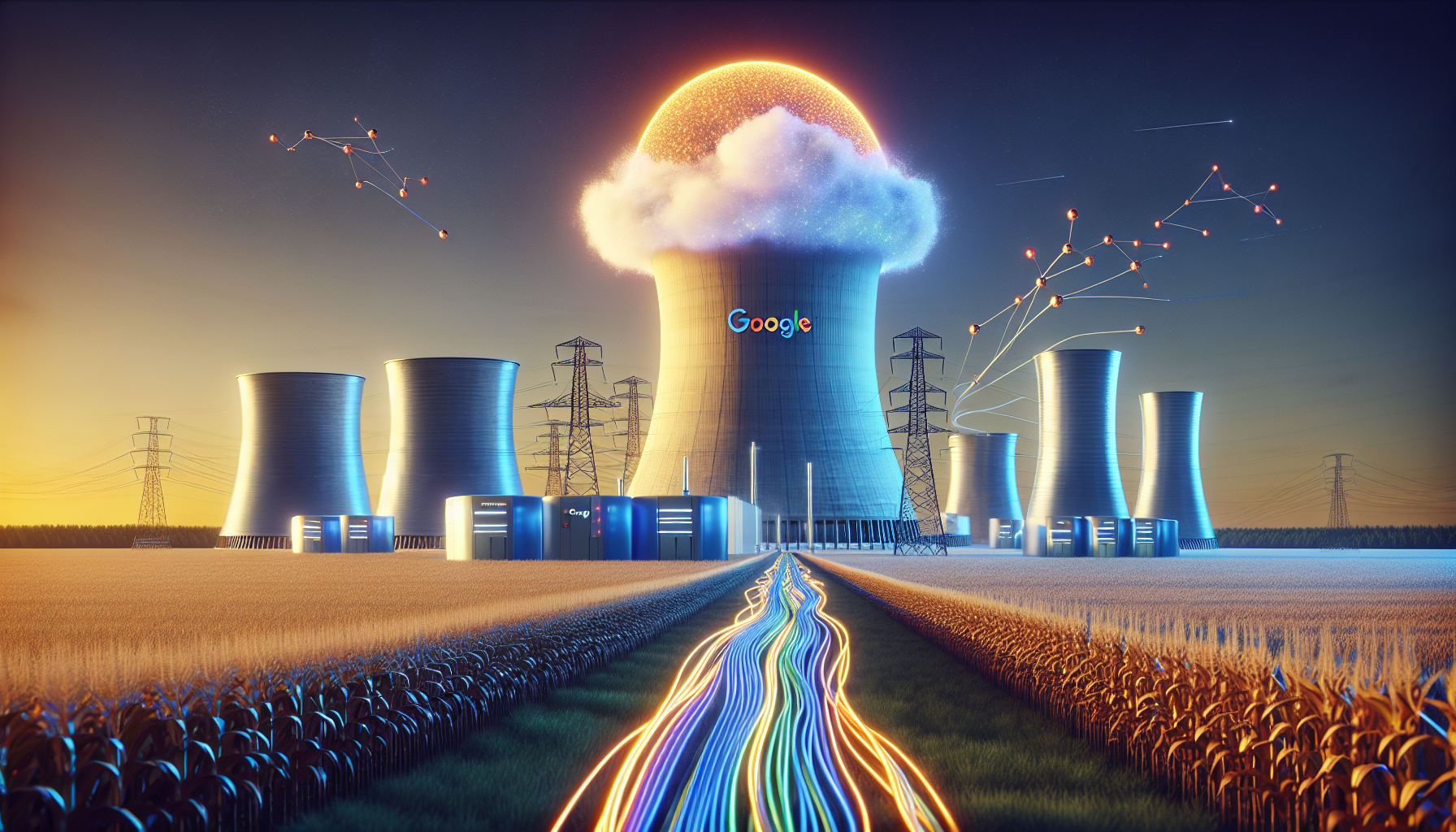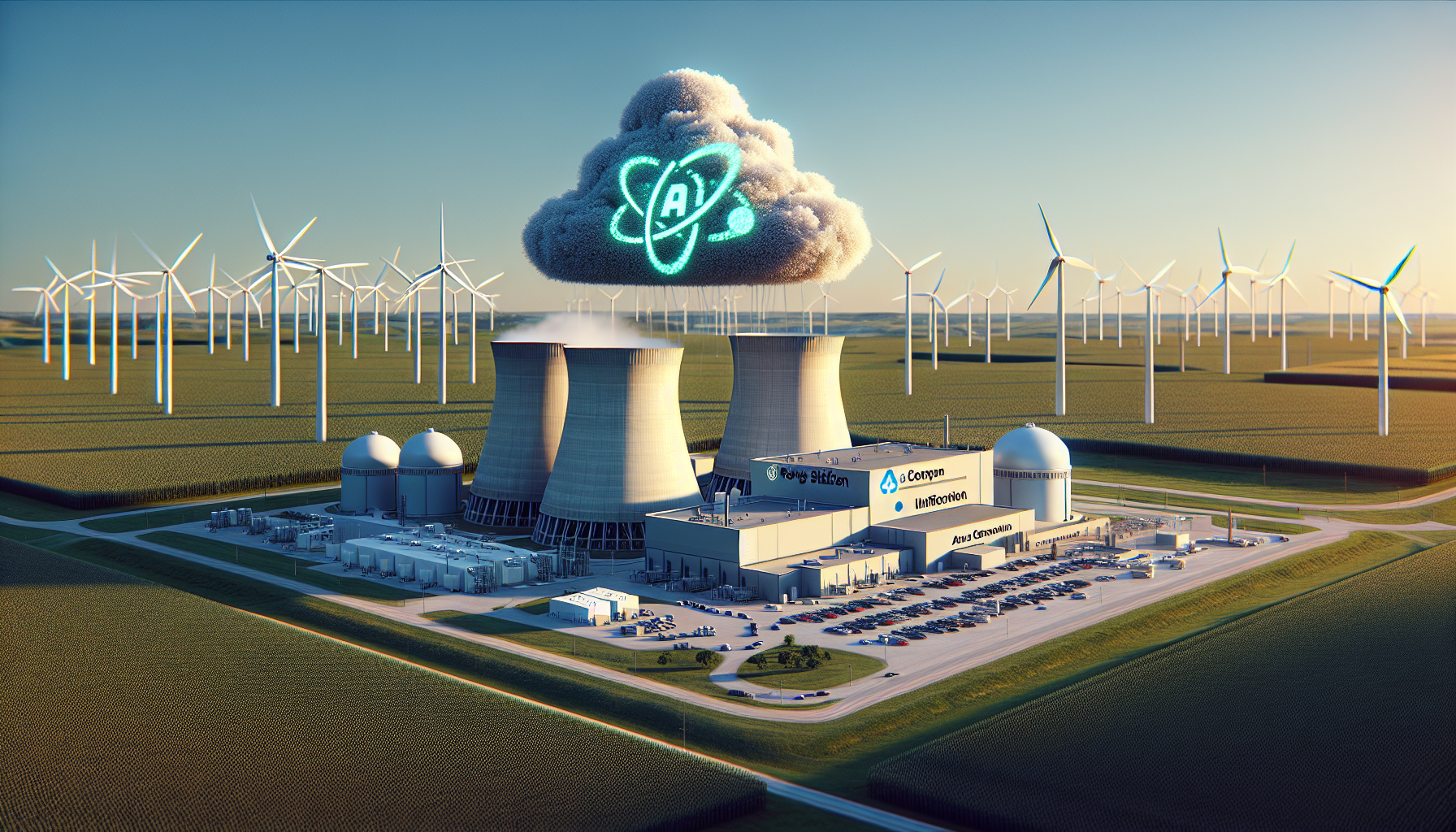The Nuclear Renaissance: How Google and NextEra Are Powering the AI Future
The relentless march of artificial intelligence is colliding with a fundamental reality: power is the new currency of innovation. In a landmark move that signals a seismic shift in energy strategy for the tech industry, Google and utility titan NextEra Energy have announced a partnership to resurrect the Duane Arnold Energy Center, Iowa's only nuclear power plant. This is not merely a power purchase agreement; it is a strategic blueprint for how Big Tech plans to fuel its voracious AI ambitions while navigating the complex landscape of sustainability and grid reliability.
From Decommissioning to Re-Powering: The Iowa Nuclear Revival
The Duane Arnold Energy Center, shuttered in 2020, was a casualty of an era where nuclear power struggled to compete on cost with cheap natural gas and faced significant public skepticism. Its closure represented a trend of moving away from large-scale nuclear investments. Just five years later, its planned revival tells a completely different story. Pending regulatory approval, the facility is slated to begin operations by early 2029, transforming from a relic of the past into a cornerstone of the future. This 615-megawatt facility will no longer just be a power plant; it will become the dedicated engine for Google's expanding cloud computing and AI infrastructure in the state.
The Insatiable Appetite of Artificial Intelligence
Why is this necessary? The energy demands of modern AI are staggering. Training sophisticated large language models and running complex AI inference tasks consume exponentially more power than traditional cloud computing. Data centers, the physical homes of these digital brains, are evolving from large server farms into industrial-scale power consumers. According to the U.S. Energy Information Administration, the United States hit a record high for annual electricity consumption in 2024, a trend directly correlated with the explosive growth of data centers. This surge has created a critical challenge: how to power the next generation of technology without overburdening existing grids or exacerbating carbon emissions.

A 24/7 Carbon-Free Energy Solution
Google's commitment is not just to buy power, but to secure a "24/7 carbon-free energy source." This is a crucial distinction. While tech companies have historically purchased renewable energy credits from wind and solar farms, these are often intermittent sources. The sun doesn't always shine, and the wind doesn't always blow. AI data centers, however, operate 24 hours a day, 7 days a week. Nuclear power provides the perfect complement—a stable, reliable, and constant baseload power supply that is entirely free of carbon emissions during operation. This partnership allows Google to make tangible progress on its clean energy goals while ensuring the unwavering reliability required for its global AI services.
A New Model for Public-Private Partnership
This deal is structured as a symbiotic ecosystem, benefiting multiple stakeholders. Google will act as the anchor tenant, purchasing the majority of the plant's output to power its AI operations. The surplus electricity will be sold to the Central Iowa Power Cooperative, the state's largest energy provider. This arrangement does more than just power Google's servers; it injects significant new capacity into the local Iowa grid, enhancing reliability and stability for residents and other businesses. It's a model that transforms a corporate energy need into a public utility upgrade, potentially insulating the region from energy shortages and price volatility.
Navigating the Sustainability Paradox
This nuclear push comes with a complex backdrop for Google's environmental commitments. In June, the company quietly removed its ambitious pledge to achieve "net-zero" carbon emissions across its operations by 2030 from the main page of its corporate sustainability website. This move raised eyebrows among environmental advocates. The revival of Duane Arnold can be seen as a pragmatic response to this challenge. Faced with the undeniable energy intensity of AI, Google is pivoting from a potentially unattainable broad net-zero goal to a concrete strategy of decarbonizing its most power-intensive operations with firm, zero-carbon nuclear energy.
Big Tech's Broader Bet on Atomic Energy
Google is not alone in this atomic awakening. This Iowa project is part of a much larger trend sweeping across the technology sector:

- Microsoft & Constellation Energy: Microsoft has entered a similar partnership to power its AI data centers with nuclear energy from Constellation's fleet of power plants.
- Oracle's Modular Reactors: Oracle is taking a futuristic approach, publicly stating it is designing a data center to be directly powered by three small modular nuclear reactors (SMRs).
- Strategic Long-Term Planning: These moves indicate that tech giants view nuclear not as a stopgap, but as a foundational pillar of their long-term energy security and sustainability strategy.
Overcoming Hurdles: Public Perception and Project Execution
Despite the momentum, the path forward is not without obstacles. The nuclear industry continues to grapple with public concerns over safety and the long-term management of radioactive waste. Furthermore, large-scale nuclear projects have a history of budget overruns and construction delays. The success of the Duane Arnold revival will hinge on NextEra's ability to execute the recommissioning efficiently and on budget, potentially setting a new precedent for the viability of repurposing existing nuclear sites. This stands in contrast to the growing public pushback against new data centers, as seen when Google withdrew plans for a facility in Indiana over community concerns about resource use.
Iowa: The Willing Host for a Digital Future
Iowa has positioned itself as a welcoming hub for this technological transformation. With over $6.8 billion already invested by Google in data centers within the state, Iowa lawmakers have actively supported these projects, highlighting the job creation and economic development they bring. State Senator Charlie McClintock's endorsement of the Duane Arnold project underscores a key political reality: regions that can offer reliable, clean power and a supportive regulatory environment will be the winners in the race to attract the high-tech industries of the future.
Conclusion: Market Implications for the Coming Weeks
The Google-NextEra partnership is far more than a corporate press release; it is a bellwether for massive, impending shifts across multiple markets. In the coming weeks and months, we can expect to see a significant re-evaluation of energy assets. The market will likely begin pricing in a "nuclear premium," with the stocks of companies like NextEra and Constellation Energy receiving heightened attention from investors betting on the AI-energy nexus. The conversation around "green" investing will expand to firmly include nuclear power as a viable ESG (Environmental, Social, and Governance) asset, potentially unlocking new flows of capital. We can also anticipate intensified competition among tech giants to secure similar long-term power purchase agreements for firm, clean energy, driving innovation not just in nuclear, but in next-generation geothermal and green hydrogen storage. Finally, regulatory bodies will be under increased pressure to streamline approvals for both new nuclear projects and the repurposing of existing sites, recognizing their critical role in national energy security and technological competitiveness. This deal in Iowa is the starting pistol for a new era where the futures of AI and atomic energy are inextricably linked.

